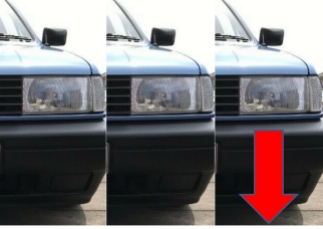
One in three cars
fails new MOT rules
Top
10 reasons for MOT failure (by percentage)
| Lamps,
reflectors, and electrical equipment |
18.3%
|
| Suspension |
14.9%
|
| Brakes |
8.8%
|
| Tyres:
|
6.8%
|
| Visibility |
6.1%
|
| Body,
chassis, structure |
4.7%
|
| Noise,
emissions, leaks: |
3.9%
|
| Steering |
2.2%
|
| Seat
belts |
1.5%
|
| Identification
of the vehicle: |
0.5%
|
| Other |
32.3%
|
|
Three
million vehicles taken off road as 1 in 3 cars fails the new
MOT rules
A news item on the PetrolPrices.com
website reports that following the introduction of stricter
MOT rules that came into force
on 20th of May 2018, data from the Driver and Vehicle Standards
Agency (DVSA) show that, in the first year of the new MOT’s
existence, over a third of 31 million vehicles (cars,
vans, and motorcycles) undergoing the more thorough MOT test
over the following twelve months failed. Almost
three million of these (9.6%) had ‘dangerous’
defects that resulted in repairs and a retest—or removal
from the road. PetrolPrices.com reports the the most common
reasons for the MOT failures.
Top 10 reasons
for MOT failure (by percentage)
The DVSA shared the 10 most common reasons class 3 & 4 cars
and vans failed MOTs between the 20th May 2018 and 19th May
2019. See table alongside.
Since May 2018, the
MOT includes looking for signs of obvious tyre underinflation,
brake fluid contamination, fluid leaks posing an environmental
risk, missing brake pads or discs, and checking your brake pad
warning lights.
The test also now looks at reversing lights on vehicles first
used from the 1st of September 2009, headlight washers on vehicles
first used from the 1st of September 2009 (if fitted with them),
and daytime running lights on vehicles first used from the 1st
of March 2018 (most of the latter will have their first MOT
in 2021 when they’re three years old).
Article published by Lisa Board, PetrolPrices.com (Oct 2, 2019)
More
|



